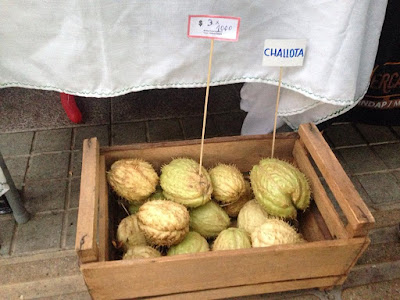The route extends for 38km, and provides access to destinations including the historic city center, the Parque Bicentenario, Cerro San Cristóbal park, and the Costanera shopping center complex. Matt and I have invested in a solid set of bikes here, and have our own favorite route- it stops by 3 artisanal bakeries :) Normally, we'd be out biking on it right now, since we're writing this on a Sunday morning. However, we have a flight in the afternoon and thought the excursion would be too ambitious.
 |
| Karen guarding our bikes as Matt gets Hot Cocoa |
 |
| Flamingoes in the Parque Bicentenario |
 |
| The Route of Road Closures |
The CicloRecreoVía always has a very festive atmosphere. It is well attended by a wide range of ages, including many families, and it's not uncommon to have someone whiz past on a bike playing music. Volunteers patrol nearly every intersection with crossing car traffic to ensure everything is running smoothly and safely.
Many companies setup promotional stands with alluring attractions- all for free! These include basic bicycle repair services, yoga classes, and loaner bikes, skates, and helmets. Other companies hand out bananas, snacks, water, and Gatorade.
On the more commercial end of the spectrum, the route is lined with independent vendors who lay out bike-related gear on picnic blankets along the route. Some newer companies setup booths, handing out promotional codes and demos of their products.
Most Sundays we spot cameramen for the CicloRecreoVía taking pictures to post on their website. This video does a good job of capturing the event. Do check it out!
The slogan for the CicloRecreoVía is "La ciudad para las personas", which translates to "The city, for the people." We find this particularly funny because it implies that cars have nothing to do with people. Here's photo of the slogan in-situ.
 |
| "La ciudad para las personas." Image credit: TripAdvisor |
We've also biked a 10km stretch of the Mapocho 42k, a permanent bike path that follows the Mapocho River for 42km. At first, I found the branding confusing- the bike path is covered in little bronze tiles that say "M42k". Originally, I thought these were kilometer markers that showed the distance you had travelled. One day, I paid more attention and realized they all had the same distance! Whoops.
 |
| Paruqe Fluvial de la Familia, Photo credit: La Tercera |






